Detailed introduction of Pallas University of Applied Sciences:
Introduction and Overview
School Positioning: Pallas University of Applied Sciences is the only higher education institution of applied arts in Estonia, focusing on providing students with professional education in the field of art and cultivating artistic talents with innovative ability and practical skills.
Student size: The specific number of students is not clearly reported.
History and establishment time
The school was officially established on August 1, 2000, but its history can be traced back to an art education institution established in Tartu in 1919. From 1919 to 1960, the Tartu Academy of Arts existed as a secondary and higher education institution under various names. From 2000 to 2018, it was called the Tartu Academy of Arts. In 2018, it was renamed Pallas University of Applied Sciences.
School Strength
Faculty: It has a professional team of teachers, including experts and professors in various art fields, such as Professor Peeter Linnap as the head of the photography department and Kaspar Tam Salu as the head of the painting department. They have rich experience in teaching and artistic creation and can provide students with high-quality professional guidance.
Teaching Facilities: The school is equipped with complete art teaching facilities, such as libraries, art studios, exhibition halls, etc., which provide good conditions for students' learning and practice. For example, the school's art gallery has been open since 2009. Since its opening in 2000, it has become the largest exhibition venue in Tartu, providing a platform for students and teachers to display their works. It also holds various seminars and workshops to promote art exchanges and learning.
International Cooperation: Actively carry out international exchange and cooperation projects, and establish cooperative relations with art schools and institutions in many countries and regions, providing students with broad international exchange opportunities, broadening their international horizons, and enhancing the school's international influence.
Nature of the institution
A public non-profit higher education institution.
Educational philosophy
Focus on cultivating students' innovative thinking and practical ability, emphasizing the combination of theory and practice, so that students can master a solid foundation in art theory while being able to skillfully use various art skills for creation and practice, and cultivate art professionals with independent thinking ability and innovative spirit to better adapt to the needs of the art market and social and cultural development.
Key laboratories and disciplines
Key disciplines: The school's disciplines are mainly concentrated in the fields of art and humanities, covering photography, protection and restoration, painting, There are eight professional directions, including media and advertising design, interior product design, leather product design and technology, sculpture, and textiles. These disciplines are closely integrated with the needs of the art market, providing students with a rich and diverse professional choice, enabling students to study and develop in-depth in the art field they are interested in.
Key laboratories: No specific key laboratories are explicitly mentioned, but the school's various art studios and practice sites can be regarded as an important platform for students to conduct practical creation and research, providing students with an environment similar to actual art creation and production, helping students to apply what they have learned to practice, improve their artistic creation level and ability to solve practical problems.
Department
The school has multiple departments, including the Department of Photography, the Department of Painting, the Department of Media and Advertising Design, the Department of Furniture, the Department of Leather Design, the Department of Sculpture, the Department of Textiles, etc. Each department has its own unique professional settings and teaching focus, which together constitute the school's rich and diverse discipline system, providing students with systematic art education and professional training.
Ranking
According to 4icu.org In the 2024 ranking, the school ranks 8977th in the world and 13th in Estonia.
Expenses
Tuition fees: The school offers two types of student quotas: state-commissioned training and self-funded. Tuition fees for different majors and training methods may vary, but the specific tuition fee information is not clearly mentioned. You can check the school's official website for detailed information.
Living expenses: The cost of living in Estonia is relatively low. The monthly living expenses of students (including accommodation, food, transportation, etc.) are about 500-800 euros, but the specific expenses vary depending on personal lifestyle and consumption habits.
Campus
Campus facilities: The main campus is located in Karlova, Tartu, Estonia, and the campus address is Tähe 38b, 50103 Tartu. The campus is equipped with facilities such as libraries, art studios, exhibition halls, and cafeterias, providing students with a good learning and living environment.
Campus life: The school provides students with a variety of extracurricular activities and community organizations. Students can participate in various art clubs, cultural activities, seminars, etc. according to their interests and hobbies, enriching their extracurricular life, expanding their interpersonal network, and creating a strong artistic atmosphere and a multicultural exchange environment.
-
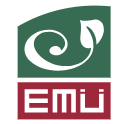
Estonian University of Life Sciences
-
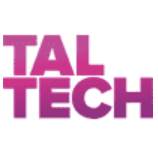
Tallinn University of Technology
-
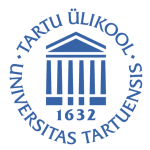
University of Tartu
-
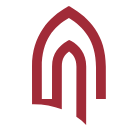
Tallinn University
-

Estonian School of Diplomacy
-
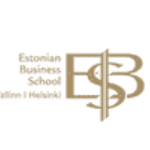
Estonian Business School
-
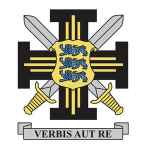
Estonian Academy of Security Sciences
-

Estonian Academy of Arts
-
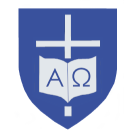
Institute of Theology of the EELC
-
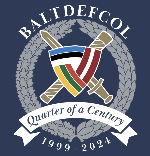
Baltic Defence College
-

Mesoamerican University
-

Istmo University
-

Mariano Galvez University of Guatemala
-

Regional University of Guatemala
-

Galileo University
-

Francisco Marroquín University
-

Rafael Landívar University
-

University of the Valley of Guatemala
-

University of San Carlos of Guatemala
-

Technological Institute of Tlaxcala Plateau
-

Golfo University
-

Technological University of South Sonora
-

Technological University of Huejotzingo
-

Tizimín Institute of Technology
-

Chilpancingo Institute of Technology

